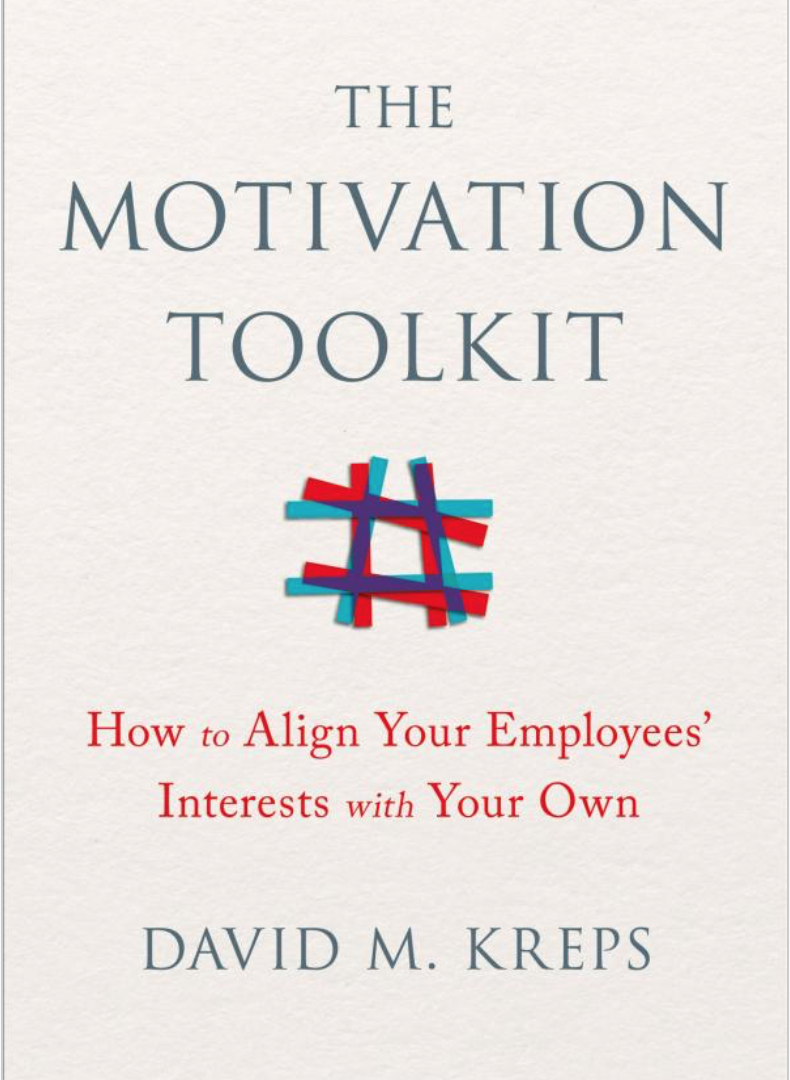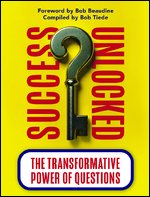Book review: The Motivation Toolkit
 In The Motivation Toolkit, David M. Kreps writes about “agency problems” in business: “agents” (those who have “agency” and make choices) have “agendas” that differ from those of the owners.
In The Motivation Toolkit, David M. Kreps writes about “agency problems” in business: “agents” (those who have “agency” and make choices) have “agendas” that differ from those of the owners.
Owners are usually interested in maximizing profits and shareholder value, but managers and employees have competing interests. Managers may be more interested in over-staffing and maximizing budgets. Employees may be more interested in longer breaks, surfing the web and bringing home some extra office supplies. All of these problems are exacerbated as a firm gets larger and management structure gets thicker.
Kreps is an economics professor in a top-tier business school, with knowledge in the fields of HR, labor economics, behavioral economics, psychology and game theory. So, he’s right at home in talking about the games that employees and employers play—to get the most out of their jobs and their workers.
Most of Kreps’ general advice is as obvious as it is wise.
- Motivate your employees well and avoid de-motivating them (p. 1-2).
- Be aware of both money and non-monetary aspects of compensation and job characteristics. Wrestle with intrinsic and extrinsic rewards (150).
- More broadly, Kreps says to find the right people, put them in position to be successful (e.g., communicate vision and establish effective team structures) and align their interests (p. 9).
All good advice, but easier said than done, especially given agency problems. One excellent way to deal with them—at least on paper—is to pay by “piece rate” or the like. Workers are paid per piece produced—or analogously, by commission on sales. If compensation is tightly attached to productivity, then workers will be incentivized well.
In practice, there are pros and cons to piece-rate pay. The good news: the pay structure deals with two common problems in labor markets. Who do you hire and how do you motivate them? First, piece-rate helps with “selection”; those who want to be productive are more likely to join you.
Second, whoever joins you will tend to be more productive.
Unfortunately, piece-rate is only feasible in some contexts. In particular, it’s more difficult to implement with those in “knowledge” fields (who Kreps calls “K-workers”)—and in particular, when production is done within groups rather than by individuals. (This invites what economists call the “free rider problem”.) And even if piece-rate can be done well in theory, it may not be done well in practice. As such, Kreps shares examples that worked well (e.g., Safelite) and poorly (e.g., Wells Fargo).
Of course, all of this can be applied to the “management” of a church, at least to some extent. Whether trying to align the interests of lay leaders and professional leaders—or the interests of those on a church staff—the same ideas hold: hire good people; train and empower them; communicate vision and establish effective teams; incentivize and avoid de-motivating your people with intrinsic and extrinsic rewards.
More on Book Reviews
- Book review: Building a Storybrand (by Richard Blackaby)
- Book review: He Leadeth Me (by Richard Blackaby)
- Book review: Rare Leadership: 4 Uncommon Habits for Increasing Trust, Joy, and Engagement in the People You Lead (by Richard Blackaby)
- Book review: Shaping History Through Prayer and Fasting, by Derek Prince (by Richard Blackaby)


